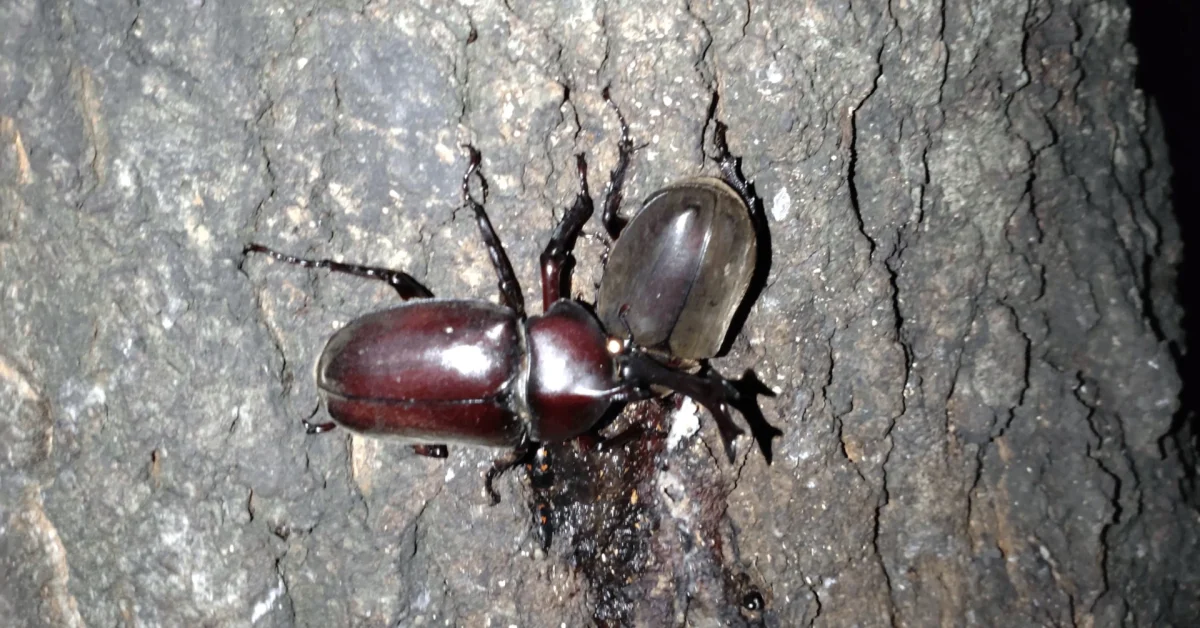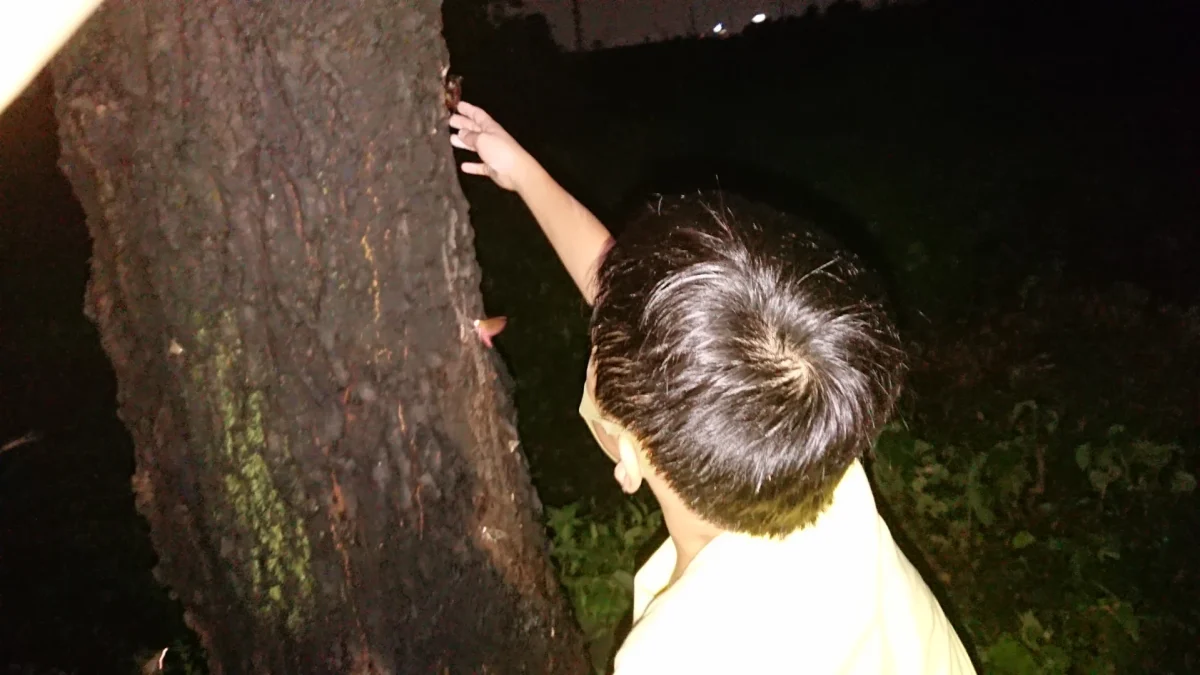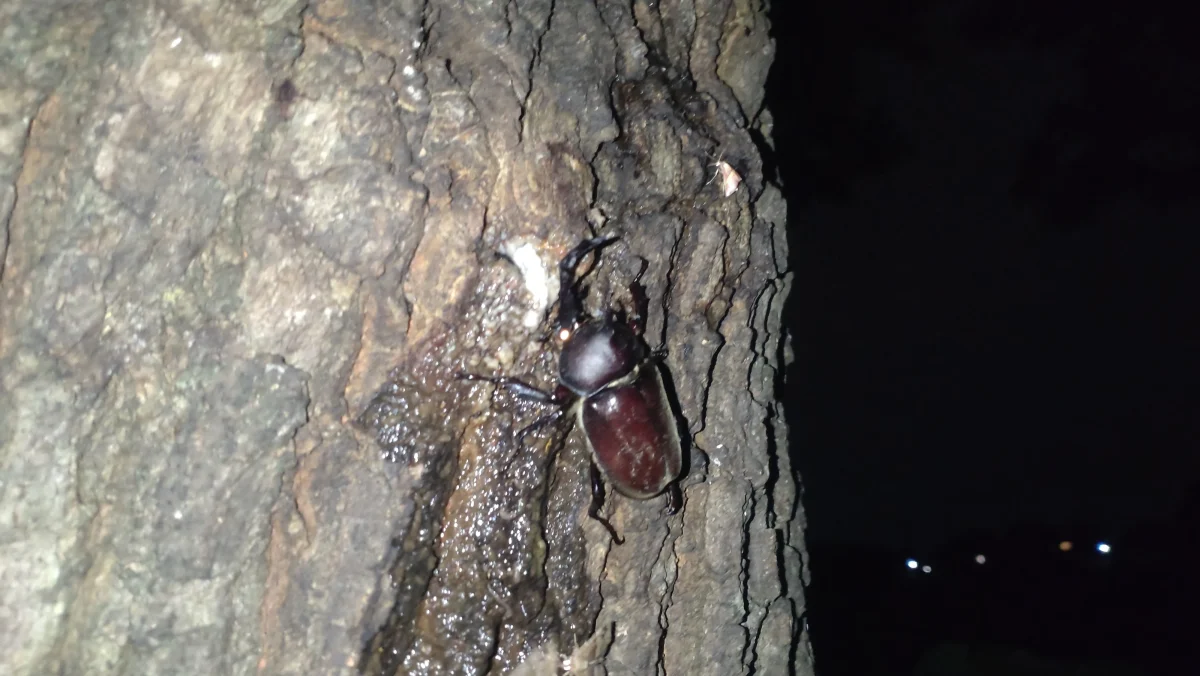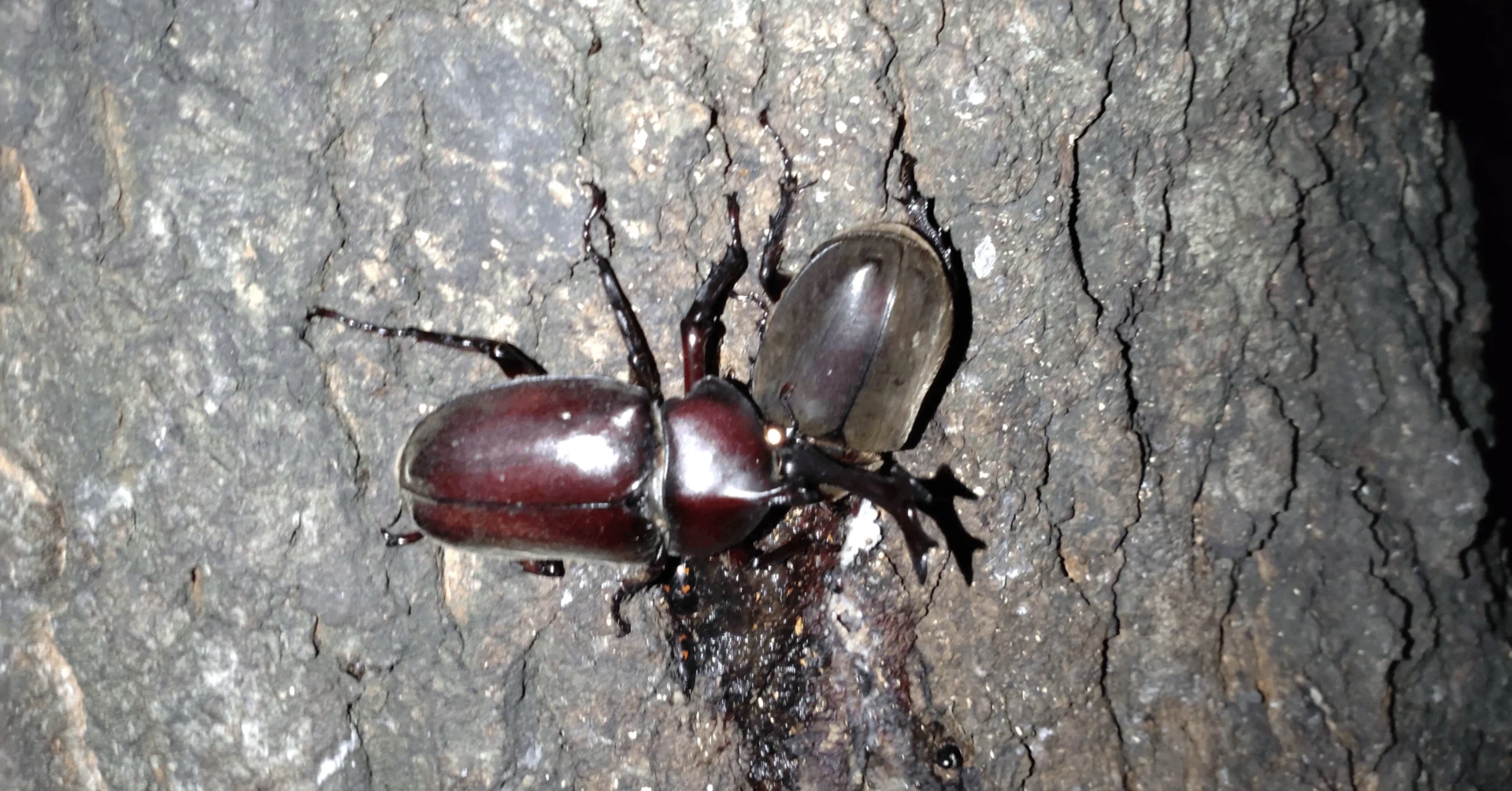
One of the most anticipated parts of summer in Japan for children is hunting for rhinoceros beetles (Kabutomushi) and stag beetles (Kuwagatamushi). The Japanese rhinoceros beetle, in particular, is named for its horn, which resembles a samurai helmet (Kabuto). It looks like a tiny warrior. While many different types of rhinoceros beetles exist worldwide, there’s a certain proud charm to the one so beloved in Japan.
Beetle Huntin

When my son was little, we used to go insect hunting in the woods near my parents’ house every summer. One year, on a muggy evening after a rain shower, I suddenly thought, “Let’s go rhinoceros beetle hunting tonight.” So, we hopped into my dad’s mini-truck and headed to the woods. The moment we got out of the truck, we were hit by the strong scent of tree sap. To this day, that smell is a sure sign for us that rhinoceros beetles are around.
In the woods, there are scattered Konara oak and Sawtooth oak trees, which rhinoceros beetles love. At night, various insects gather, drawn by the sweet sap. When we shined our flashlight on the tree trunks, we saw many rhinoceros beetles crawling around like armored soldiers. That night, we stayed for only about 10 minutes but managed to catch over 10 rhinoceros beetles and a few stag beetles.
There are a few “tricks” to insect hunting. For example, insects are more active the day after it rains, or on warm and humid nights or early mornings. If you time it right, you might be surprised by how many you find.
These kinds of experiences are still a cherished part of summer in Japan. A few years ago, we even had the opportunity to make an insect specimen together for my son’s summer vacation research project. It was my son, who usually isn’t very interested in bugs, who suggested, “If we’re going to do it, I want to make a specimen using a rhinoceros beetle.” Those hours spent sweating together, catching bugs, are an irreplaceable memory for us.
However, the summer forest isn’t always comfortable. There’s mud after the rain and swarms of mosquitoes lying in wait. Even with commercial insect repellent, I’ve been bitten over 10 times in 15 minutes. But even those moments are just funny stories now.
Engaging with nature and playing with the seasons – these activities are quietly passed down from parents to children, and then to grandchildren, in rural Japan. Rhinoceros beetles and stag beetles are more than just insects; they are the very essence of summer memories. If my son can look back as an adult and think, “I went bug hunting with my dad that summer,” then those memories are precious enough.
With Memories

Now, my son has outgrown the age of being obsessed with insects, and we no longer go bug hunting. Still, this year, I visited those same woods again.
I’m not entirely sure why. I just feel drawn to it.
Even in the same woods, the conditions seem to change from year to year. The number and appearance of the rhinoceros and stag beetles, and even the state of the trees, feel subtly different. Whether these changes are due to larger factors like global warming or local development, or just the forest’s unique natural fluctuations each year—I don’t have the answer.
Even so, when I see different insects gathered on the same tree this year compared to last year, I feel like I can sense a small change in nature.
…Of course, it might just be my imagination.
But if I can recognize those differences, I feel like it adds a little something special to my daily life.
Japanese Summary
私さて、息子はもう虫に夢中になる年齢を過ぎて、はもう虫捕りに行くことはなくなりました。
それでも、今年はまたあの同じ雑木林を訪れました。なぜなのかは自分でもよくわかりません。ただ、どうしても惹かれる気がするのです。同じ場所でも、年ごとに条件は少しずつ変わっているように感じ、そこにいるカブトムシやクワガタの数や姿、さらには木々の様子でさえ微妙に違って見えます。
これらの変化が地球温暖化や地域開発のように大きな環境の変化なのか、それとも単に年ごとの変動なのかはわかりません。それでも、去年とは違う虫たちが同じ木に集まっているのを目にすると自然の小さな変化を感じ取れた気がします。
Additional information:
Kabutomushi (カブトムシ): This refers to the Japanese rhinoceros beetle (Trypoxylus dichotomus). Its name comes from kabuto, meaning “helmet” in Japanese, due to the male beetle’s distinctive horn.
Kuwagatamushi (クワガタムシ): This refers to various species of stag beetles, known for the males’ prominent mandibles that resemble antlers.
Konara (クヌギ) and Konara oak (コナラ): These are common deciduous oak trees in Japan. Their sap is a favorite food source for many insects, including rhinoceros beetles and stag beetles.



